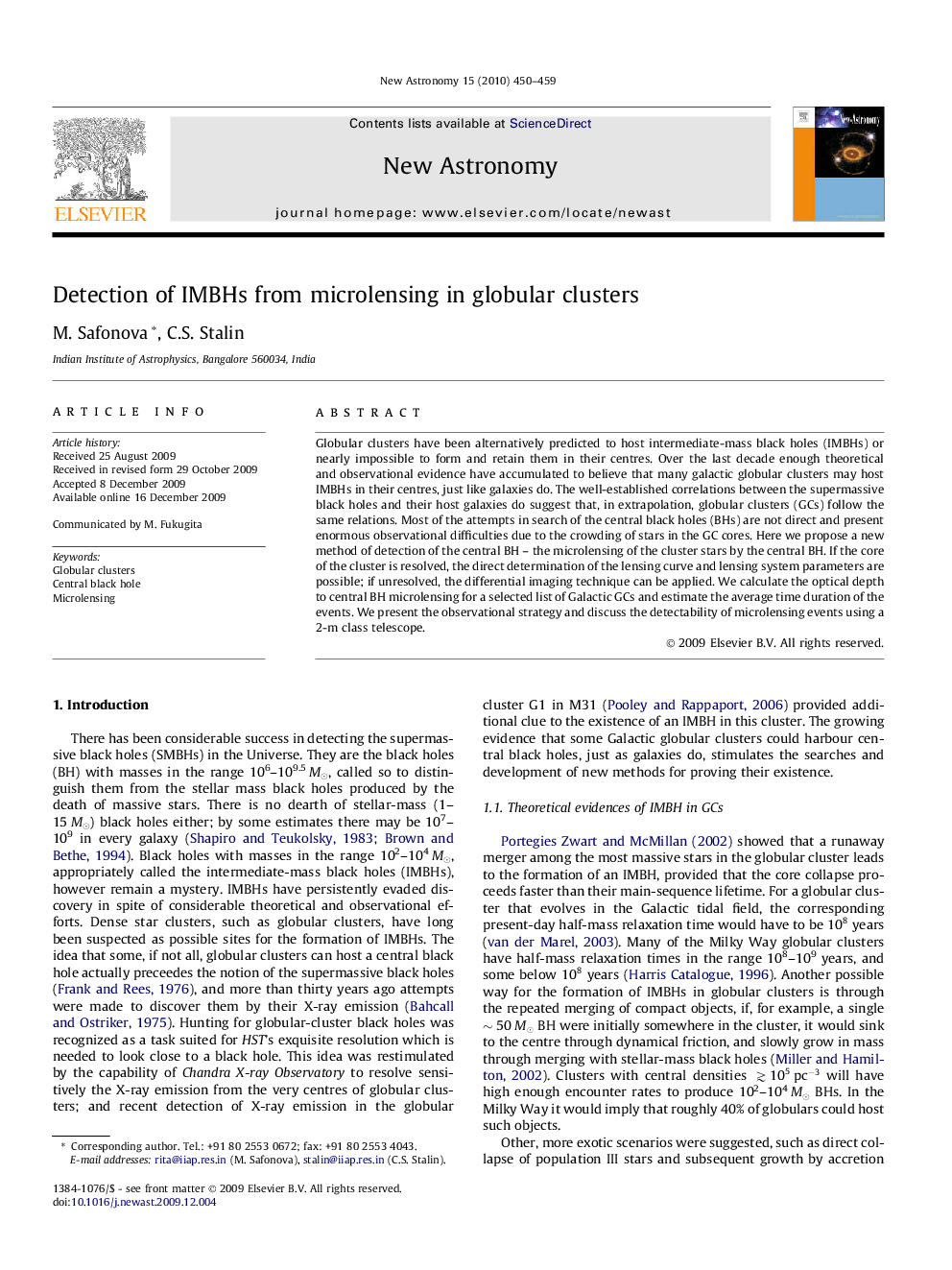| Article ID | Journal | Published Year | Pages | File Type |
|---|---|---|---|---|
| 1779394 | New Astronomy | 2010 | 10 Pages |
Globular clusters have been alternatively predicted to host intermediate-mass black holes (IMBHs) or nearly impossible to form and retain them in their centres. Over the last decade enough theoretical and observational evidence have accumulated to believe that many galactic globular clusters may host IMBHs in their centres, just like galaxies do. The well-established correlations between the supermassive black holes and their host galaxies do suggest that, in extrapolation, globular clusters (GCs) follow the same relations. Most of the attempts in search of the central black holes (BHs) are not direct and present enormous observational difficulties due to the crowding of stars in the GC cores. Here we propose a new method of detection of the central BH – the microlensing of the cluster stars by the central BH. If the core of the cluster is resolved, the direct determination of the lensing curve and lensing system parameters are possible; if unresolved, the differential imaging technique can be applied. We calculate the optical depth to central BH microlensing for a selected list of Galactic GCs and estimate the average time duration of the events. We present the observational strategy and discuss the detectability of microlensing events using a 2-m class telescope.
